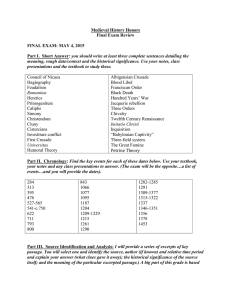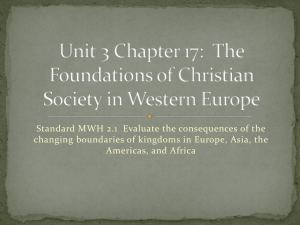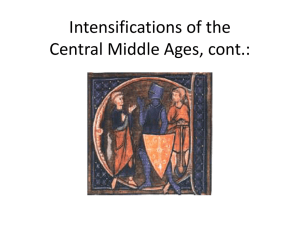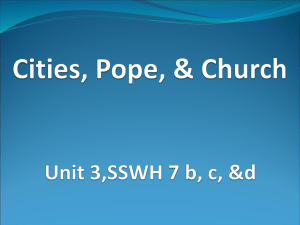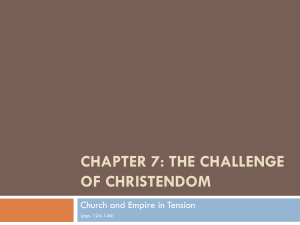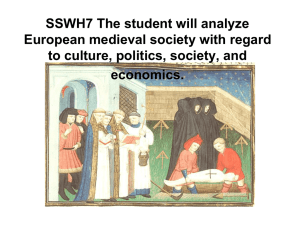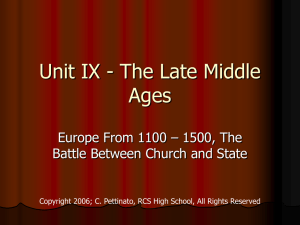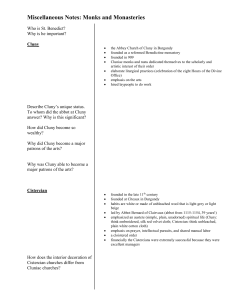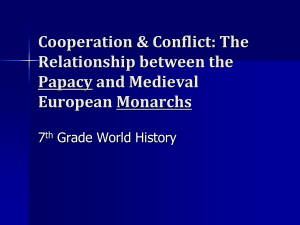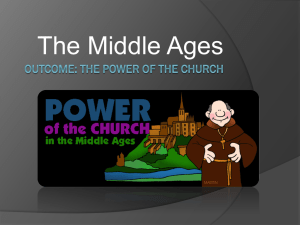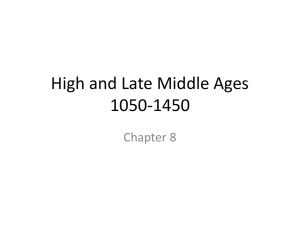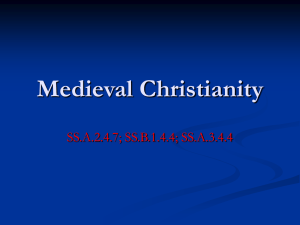The reform papacy powerpoint
advertisement
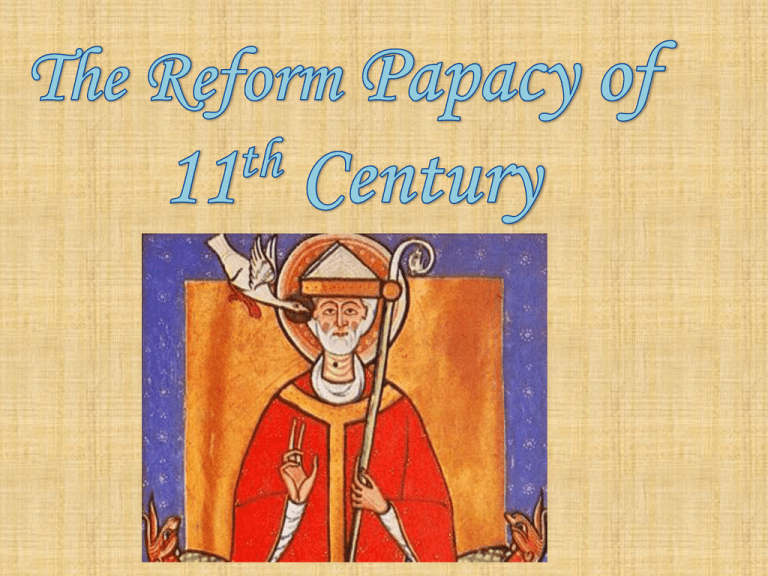
• The reform papacy originated in Cluny, a monastery in Burgundy. • The monastery at Cluny became famous thanks to a well developed administrative structure, and a sequence of highly competent abbots. • Cluny was able to expand as other monasteries were encouraged to follow exactly the same rules. • The purpose of Cluny was to bring the clergy back to the regulations, and to re-establish discipline in convents. • Cluny aimed to restore the ancient regulations of St Benedict to vigour by the practice of labour, obedience and poverty. • The monks of the Cluny obliged the rest of the clergy to reform their manners, and supported the Pope and brought all Christians, laity and clergy, to submit to his authority. • Papal Reform was another way in which changes were made in the way that church authority was recognised; the moral integrity and independence of the clergy. • A series of Popes, including Leo IX, Gregory VII and Calixtus II worked to reform the election of Church authority by stamping out simony and enforcing celibacy for all priests. • In addition to these reforms, the Church sought to establish itself as a separate spiritual authority superior to that of various European monarchs. • • • • • • Gregory VII was made Pope on April 22nd 1073. He continued reforms against simony and successfully promoted clerical celibacy in England. However, he met with stiff resistance from Philip I in France and Henry IV in Germany. With Philip's support, the French clergy refused to agree to Gregory VII's reforms. In Germany, Henry IV continued to exert influence in the election of Church leaders loyal to him, and to plunder and destroy churches in open conflict with the Holy See. In response to this, GregoryVII excommunicated Henry IV twice from the Church. Henry IV led a military campaign against Pope Gregory which led to his death in exile in 1085 • • • • • Urban II was Gregory VII's successor and became pope in 1088. He tried to gain control over the secular authority. He began preaching for reconquest and a holy war by spreading an image of Muslims as brutal oppressors and eventually launched the first crusade, showing that the pope had more control over the people and the King. Urban was born into a violent society dominated by bloody feud and vendetta, struggles for land and power were a fact of daily life. He was most famous for the preaching of the first crusade with his Sermon of Clermont on 27th November 1095. • • • • Urban called for a ‘ war of liberation’ to be waged by volunteers who had vowed to fight as an act of penance. The central power of state in France had fragmented and the real authority was no longer exercised by the King, nor my many of the great magnates. Many of the provinces had broken smaller units based on castles and their castellans and their bodies of knights, and terrorised their neighbourhoods so that they came to represent the only authorities. This breakdown was accompanied by uncontrollable violence, and so the Church tried to gain the main power and launched the first Crusade. • People in medieval times were plagued by an overwhelming anxiety; the damage of sin. • This is one of the main reasons Christians joined the crusade- to cleanse sins. • The fear of sin was shared by King and peasant alike and contributed to the reform papacy as the papacy had that control over the secular.
